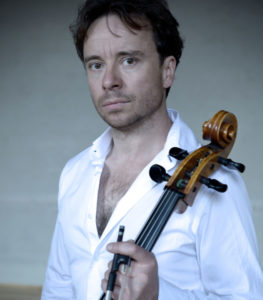
Passionate, hauntingly lyrical and profoundly sad, Sir Edward Elgar’s much-loved Cello Concerto is the featured work in St Albans Symphony Orchestra’s in St Saviour’s Church on Saturday 7 March (7.30pm).
The great English composer’s wife, Alice, died of lately-diagnosed lung cancer little more than six months after the first performance in October 1919 and the concerto proved to be the last major composition before his own death 14 years later. But audiences altogether unaware of that context can scarcely fail to be affected by its wistful beauty.
Matthew Sharp, the cello soloist, will be welcomed back by the orchestra after a 2018 performance of the Concerto No 1 by Shostakovich hailed by one critic as “a triumph”, “inspirational” and “a revelation”.
In addition to his international solo cello career, Matthew is a multi-talented performer who also works as a singer, actor and director. He has worked as an instrumentalist with London’s leading orchestras, but also sung principal baritone roles with the Royal Opera House and Opera North. He has worked with distinguished artists ranging from the late composer Sir John Taverner to Dame Shirley Bassey and the former Poet Laureate, Carol Ann Duffy.
Tom Hammond, SASO’s Principal Conductor, said: ”Working with Matthew is always a thrilling experience, knowing that he will bring a fresh perspective and new insights to any work he chooses to tackle. We are especially excited that he has agreed to play the Elgar – which probably the best-known and loved cello concerto, and one the most famous pieces of music by any British composer.”
Tom will be conducting two other English masterworks from the 20th century– both by Sir William Walton. The majestic Crown Imperial march, written for the coronation of King George VI in1937 rapidly became a hit in the concert hall as well as Westminster Abbey.
His First Symphony, performed less than three years earlier, was also a great critical success, although Walton has suffered the equivalent of writer’s block in trying to complete it. Matching pulsating rhythms with a palate of the most brilliant orchestral colours, its four movements span a range of emotions from sparkling enjoyment to deep melancholy and undisguised malice.
